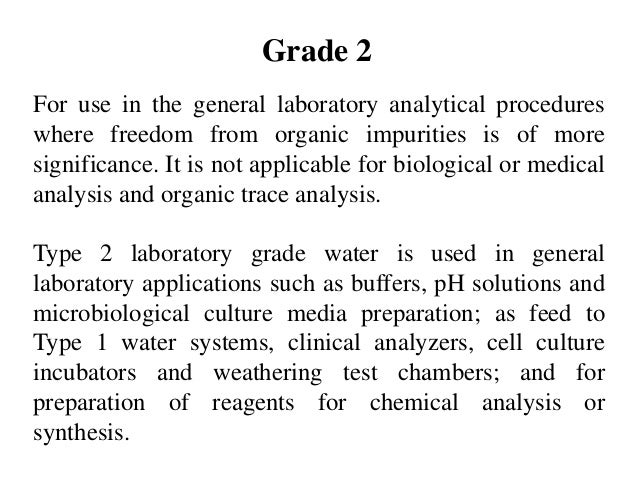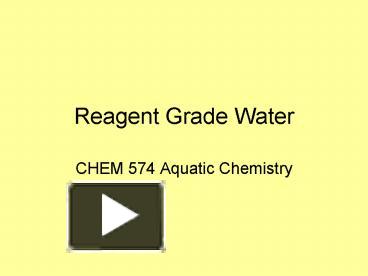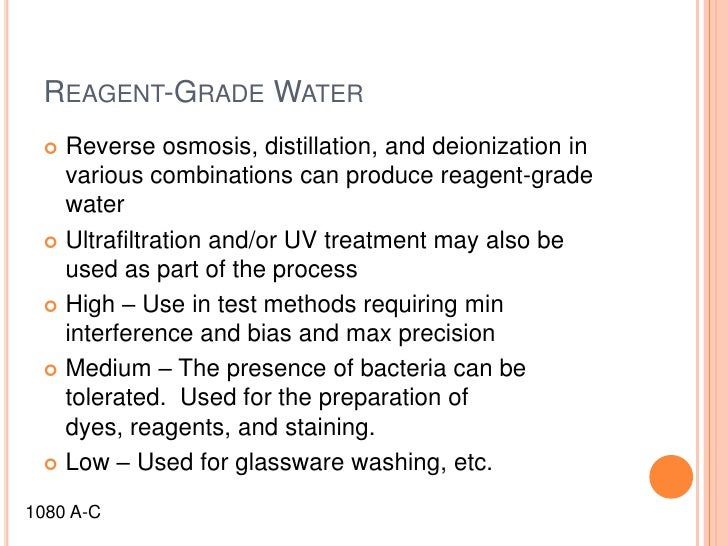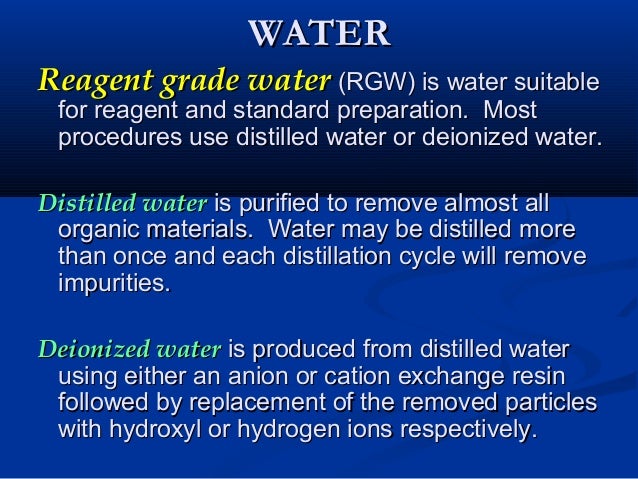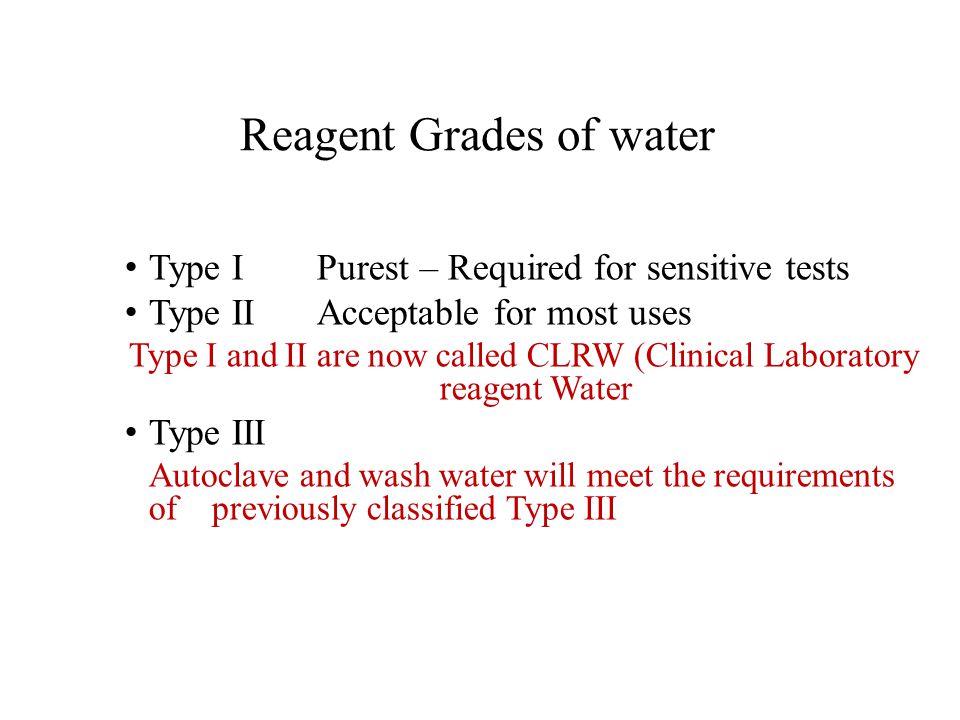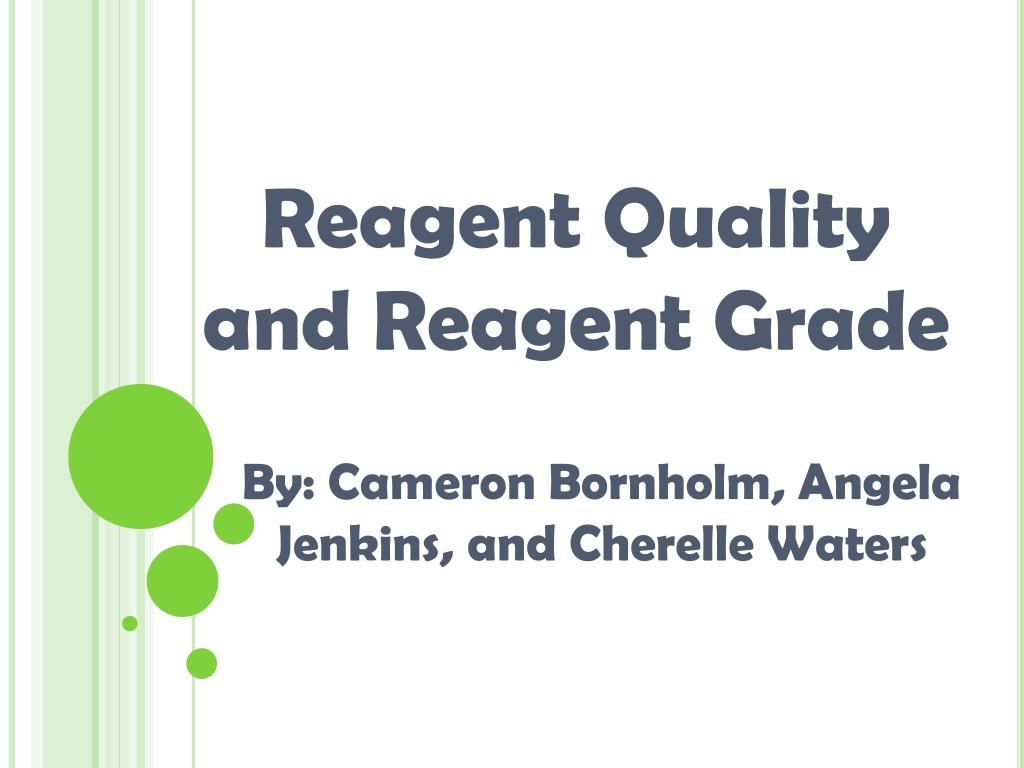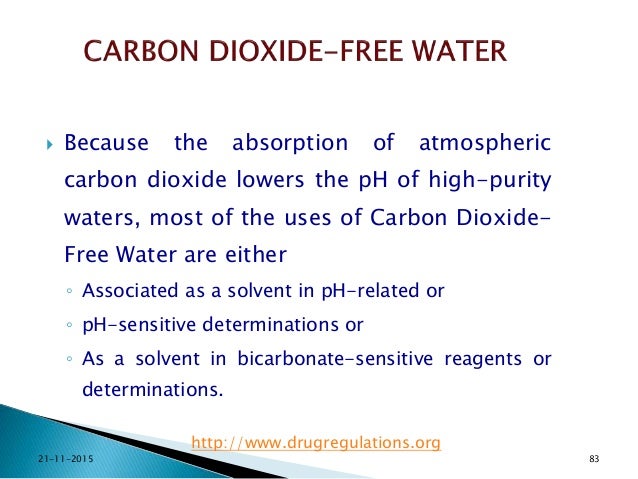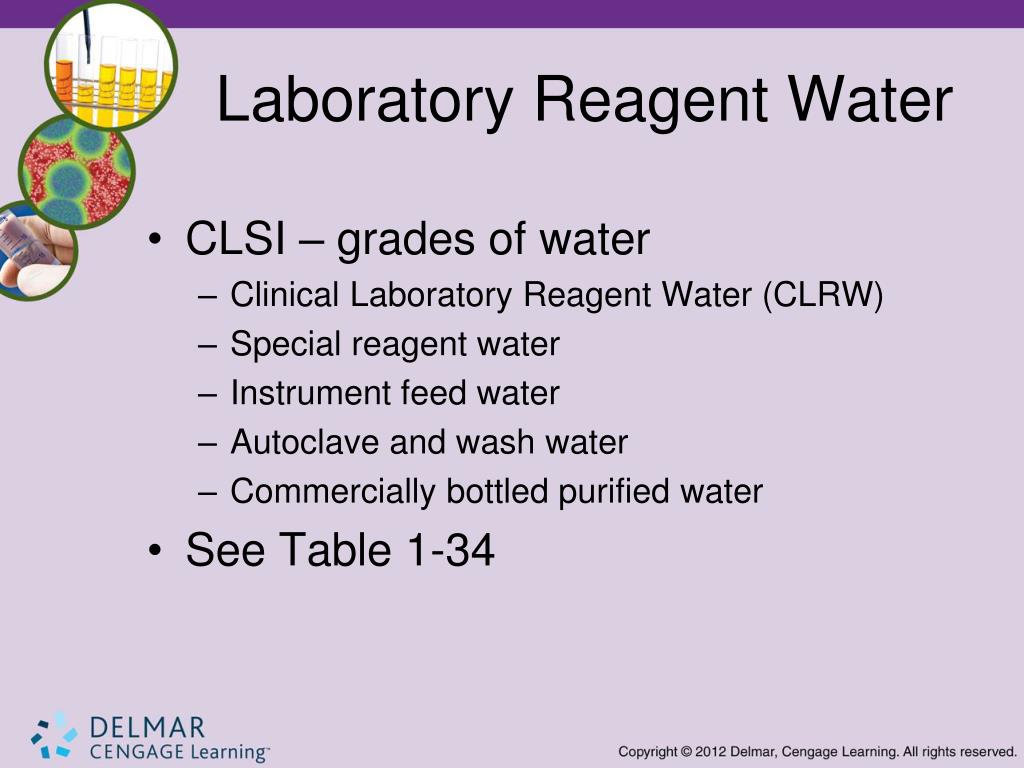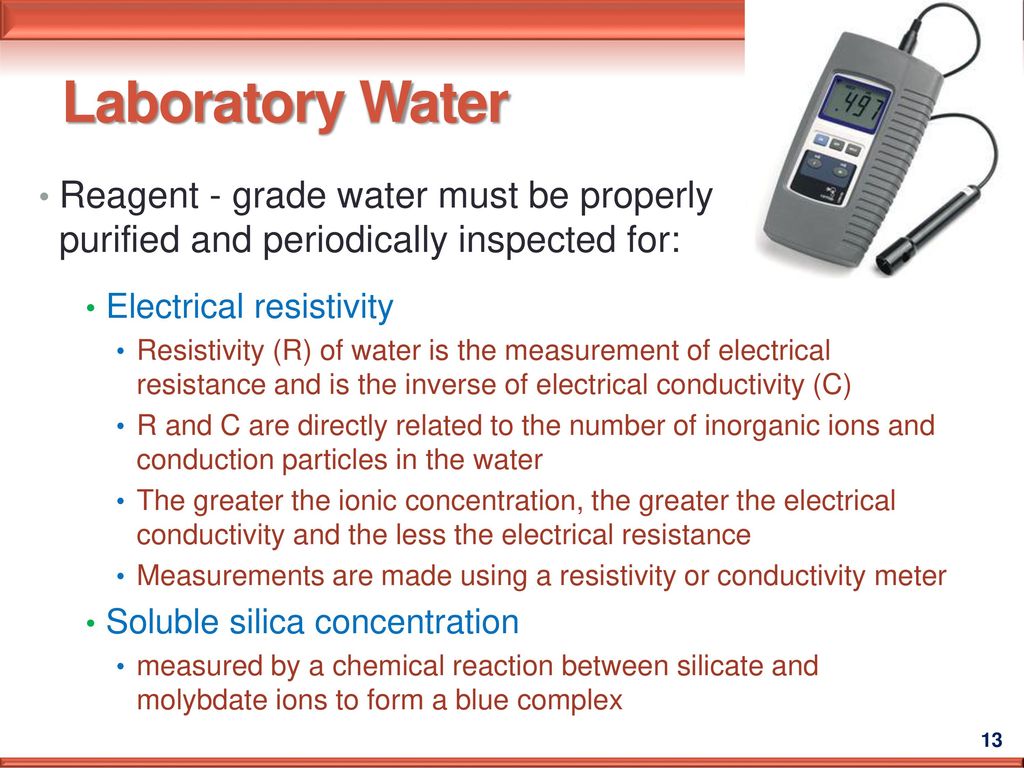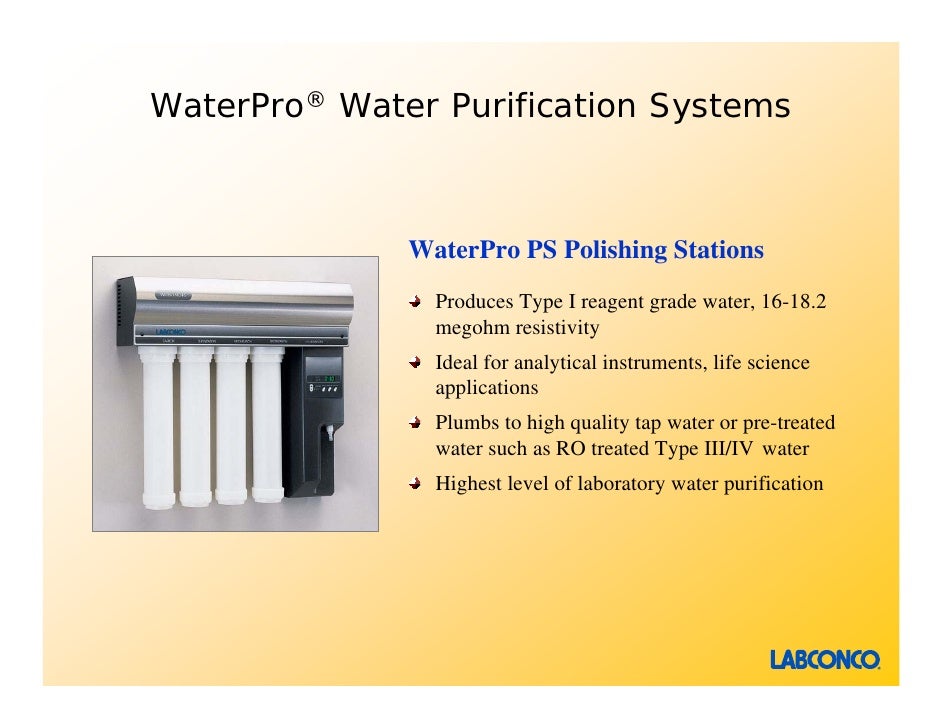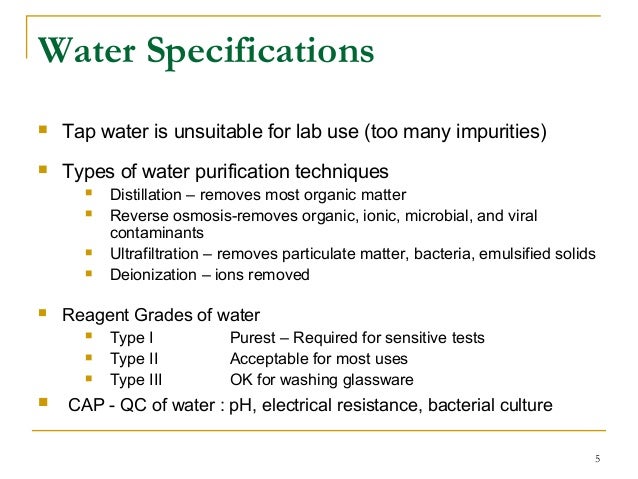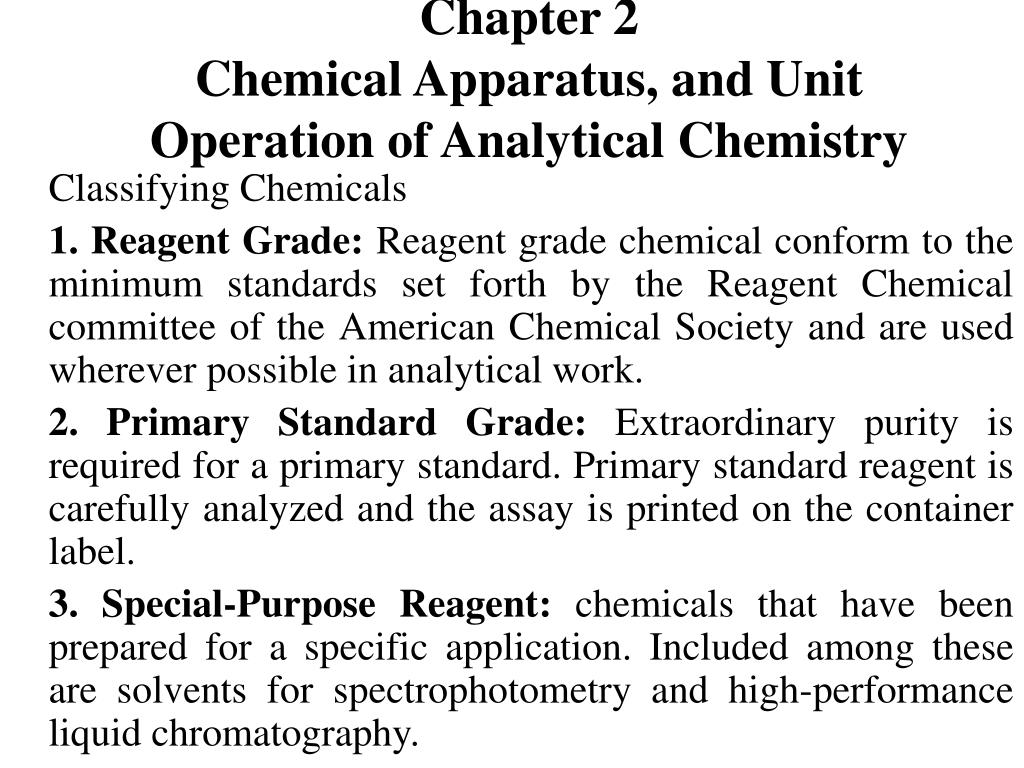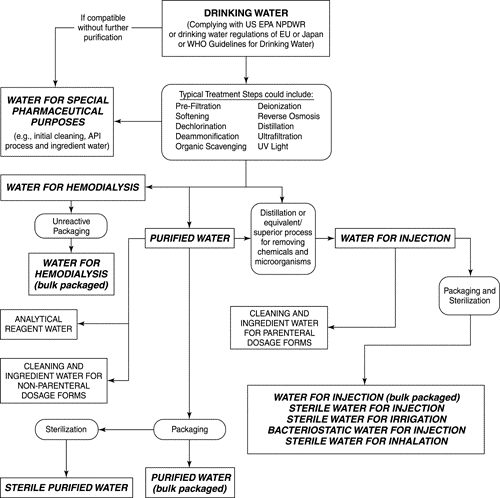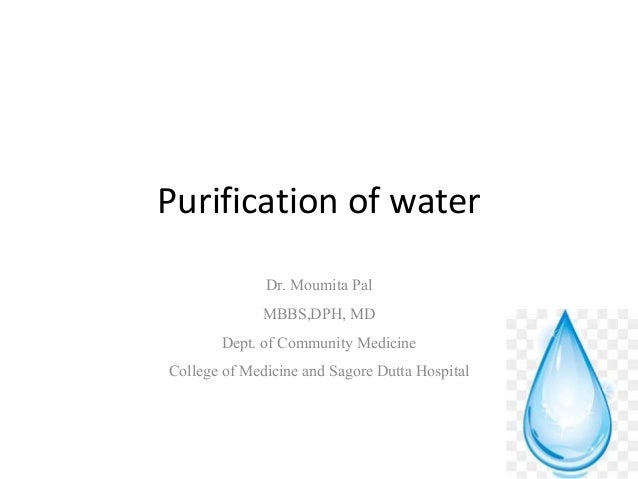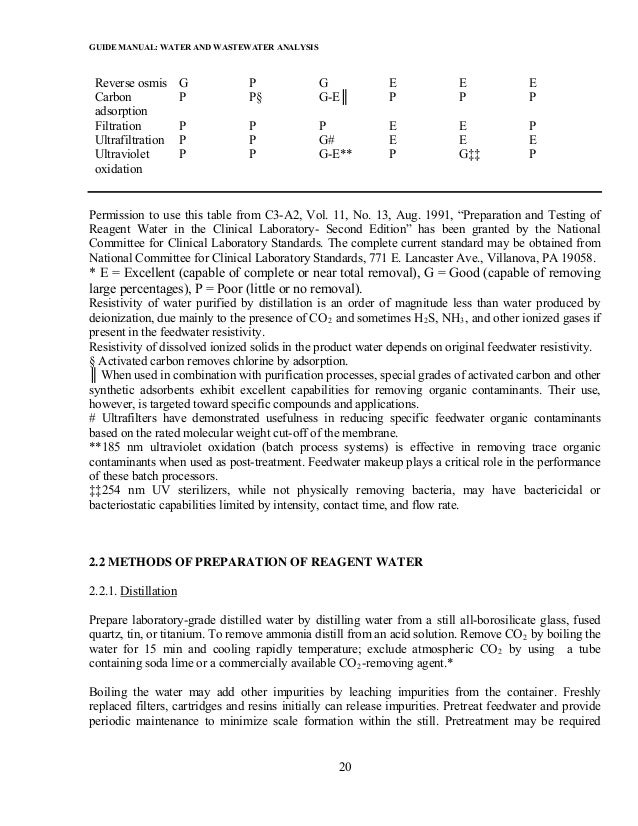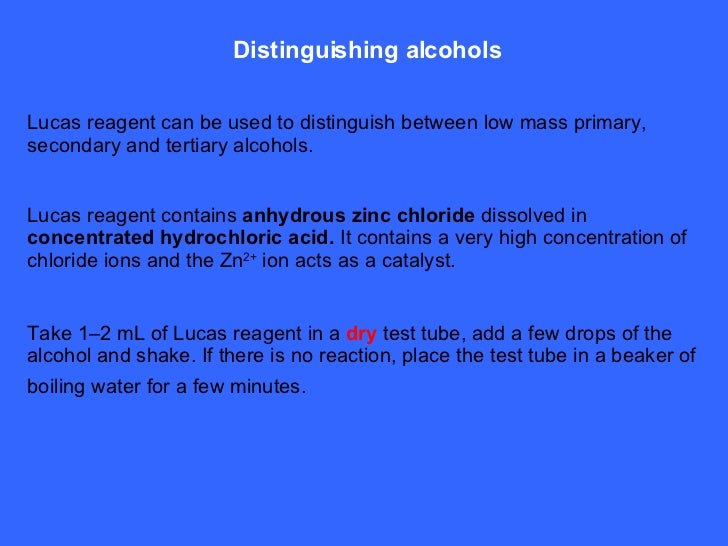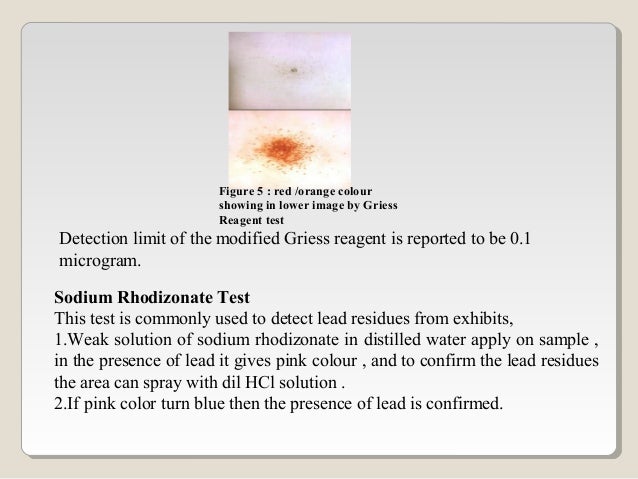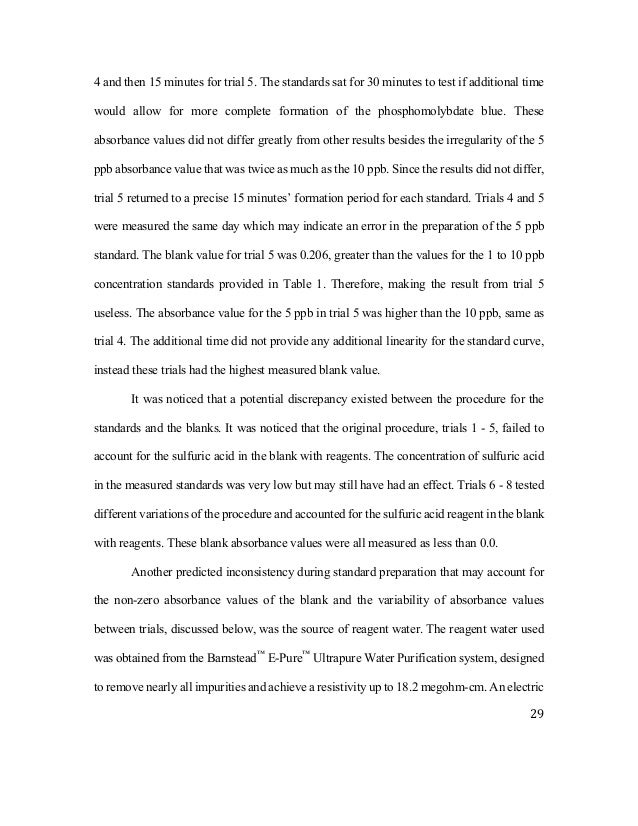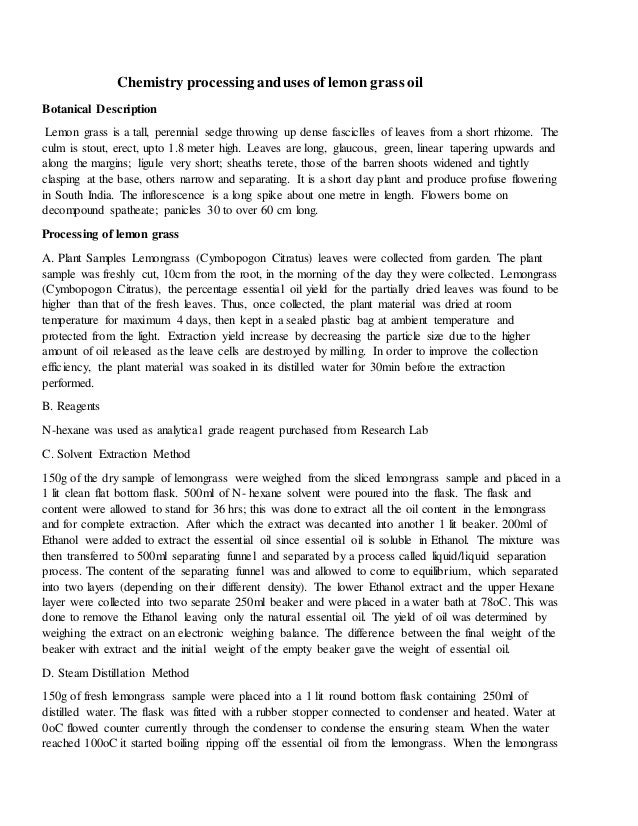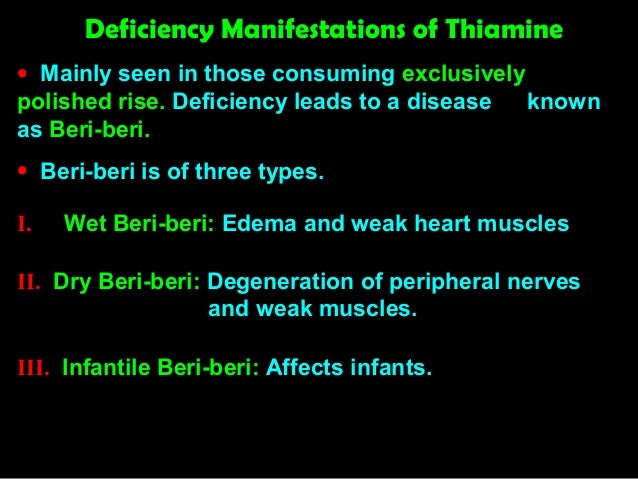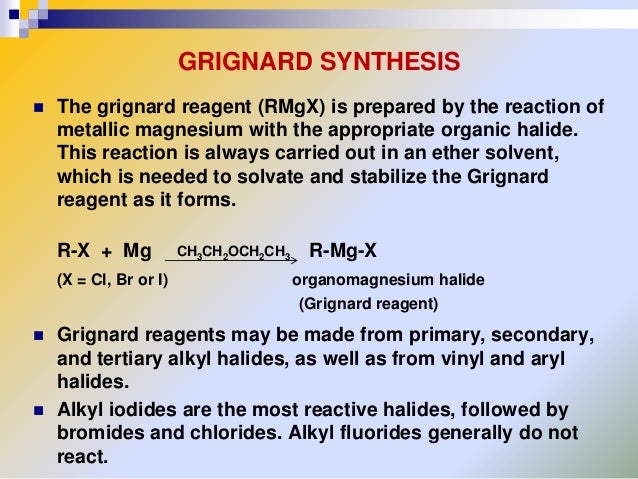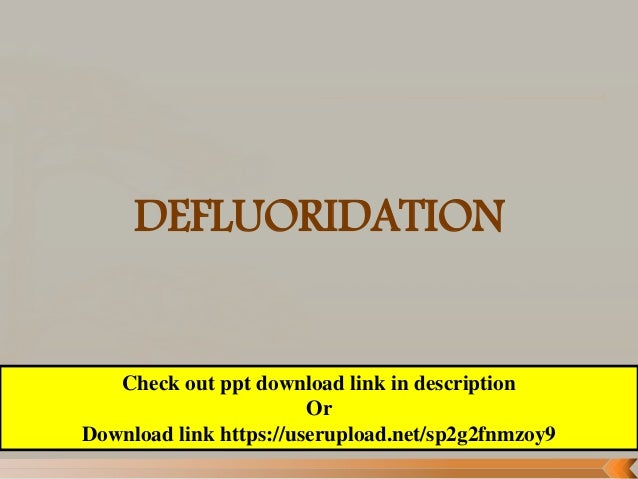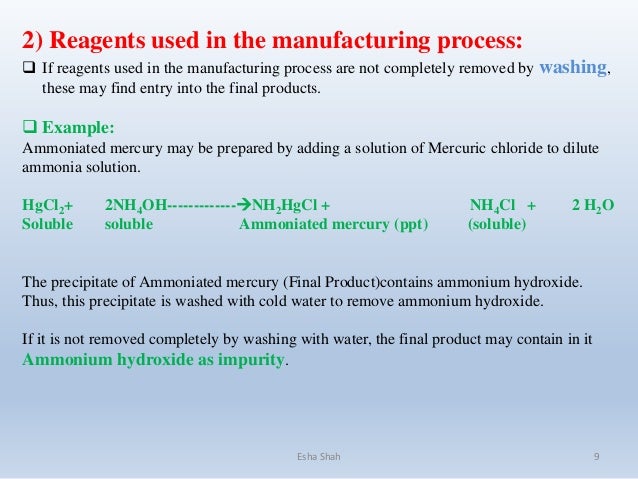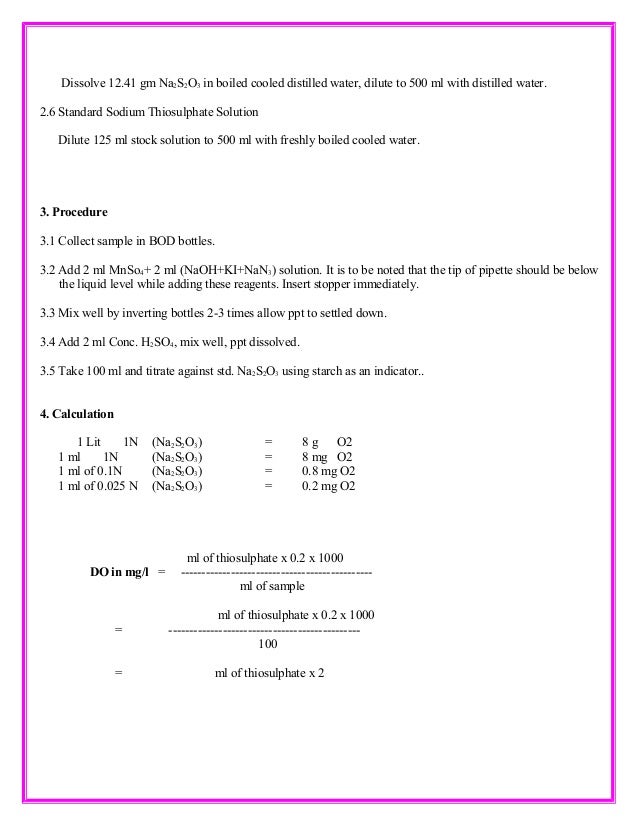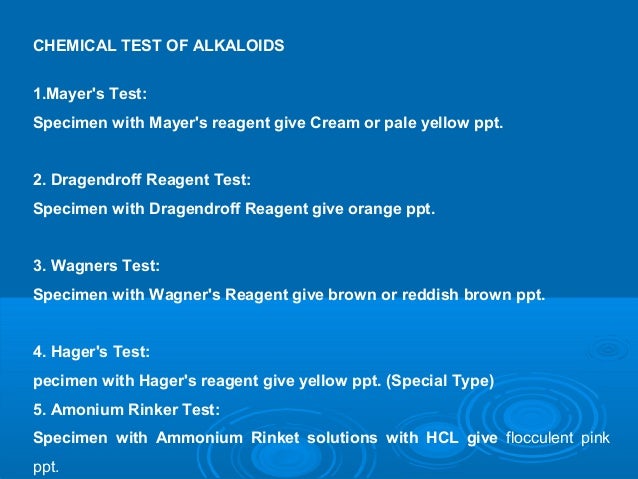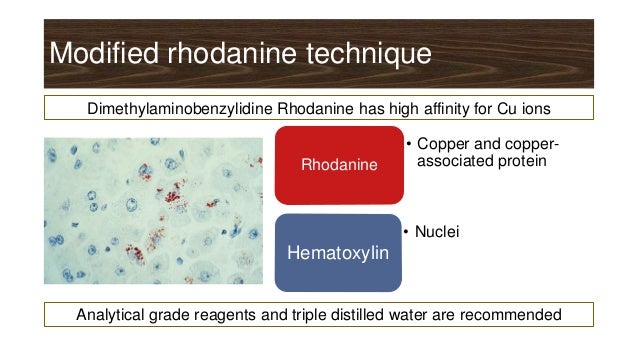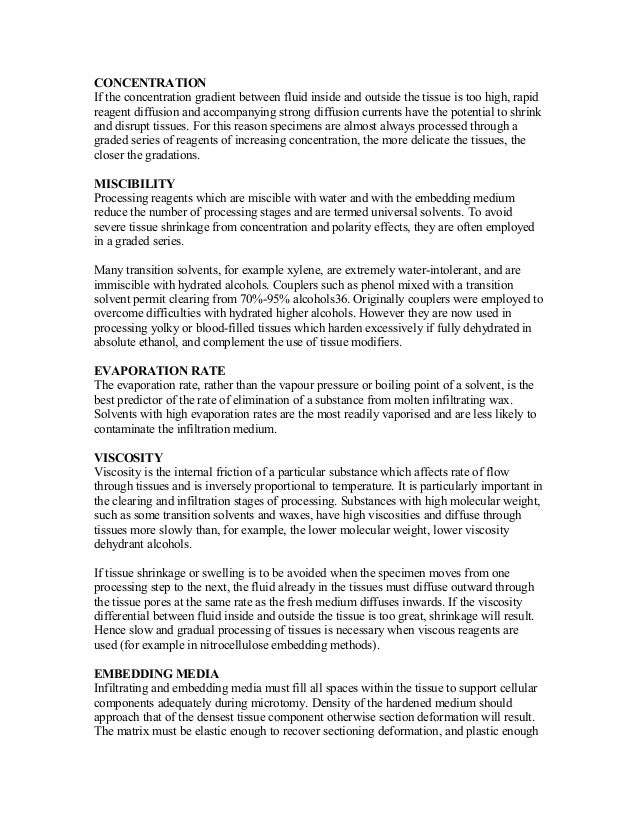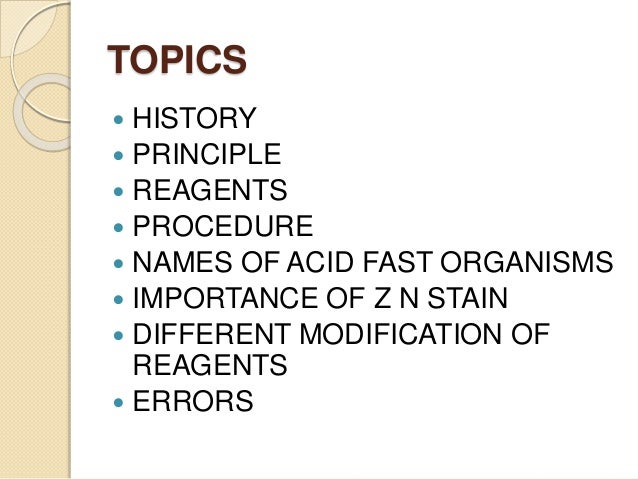Reagent Grade Water Ppt

Search results for reagent water at sigma aldrich.
Reagent grade water ppt. 2 type 2 laboratory grade water is used in general laboratory applications such as buffers ph solutions and microbiological culture media preparation. The shelf life is 24 months dependent on storage conditions not. Select up to 4 products. Type ii reagent grade.
Conductivity is 1 us cm. Laboratory reagent water 1. And for preparation of reagents for chemical analysis or synthesis. The clsi has also briefly outlined other grades in less detail such special reagent water srw and instrument feed water.
Ro di distilled do not in themselves adequately define required water quality. Resistivity is 1 mega ohms. Chloride 5 ppb. As feed to type 1 water systems clinical analyzers cell culture incubators and weathering test chambers.
Please select more than one item to compare. International organization for standardization iso the iso based its specification on iso 3696 1987 and specifies three grades of water. Sodium 5 ppb. Laboratory reagent water by vinay kumar shukla 2.
This water is considered type ii water. Process definitions alone e g. Silica 3 ppb. These specifications have been described by astm american socity for testing and materials d1193 iso international organization for standardization 3696 and clsi clrw.
1 2 1 type i grade of reagent water shall be prepared by distillation or other equal process followed by polishing with a mixed bed of ion exchange materials and a 0 2 µm membrane filter. Grade 1 grade 2 and grade 3 where grade 1 is the most pure see below. Total organic carbon toc 50 ppb. What does type 1 water mean.
Feedwater to the final polishing step must have a maximum conductivity of 20 µs cm at 298k 25 c. Reagent water has quantitative specifications that describe the level of purity for the water. Water meeting the. 1 2 2 type ii grade of reagent water shall be prepared by.
Not manufactured from distilled water. Preparation and testing of reagent water in the clinical laboratory in june of 2006 the clinical laboratory standards institute published the final draft of the 4th edition of preparation and testing of reagent water in the clinical laboratory this is an international nonprofit standards developing and educational organization that was previously known as nccls. Introduction water s ability to dissolve compounds along with its polarity bonding melting boiling and freezing points heat absorption and vaporization characteristics arguably make it the most versatile substance water is the most common reagent used in the laboratory and while water quality can often be.
